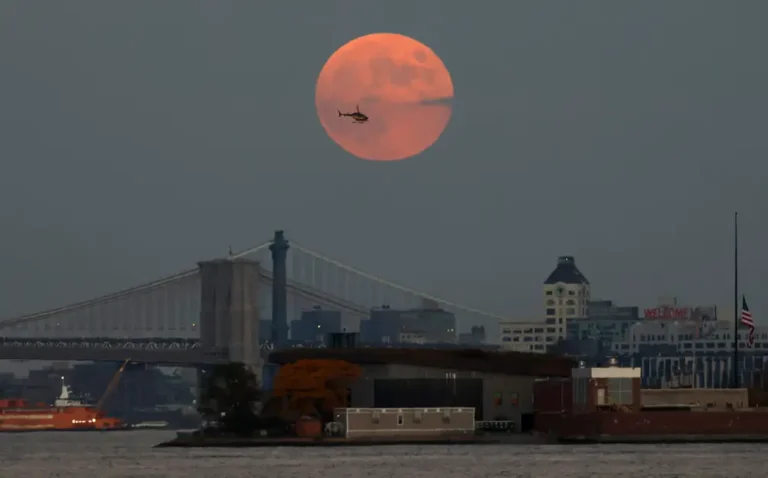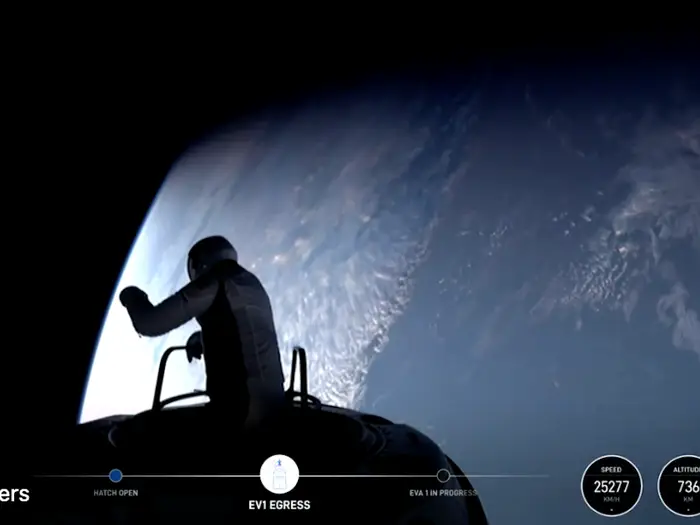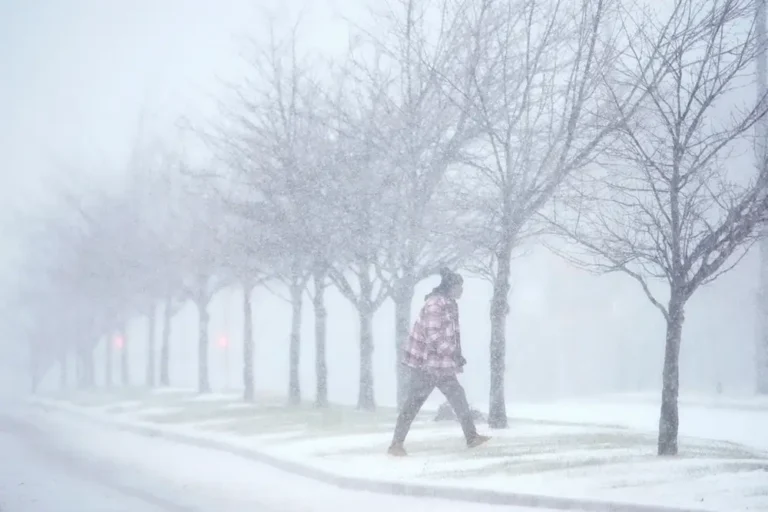How to see all 7 planets align in a rare night-sky parade
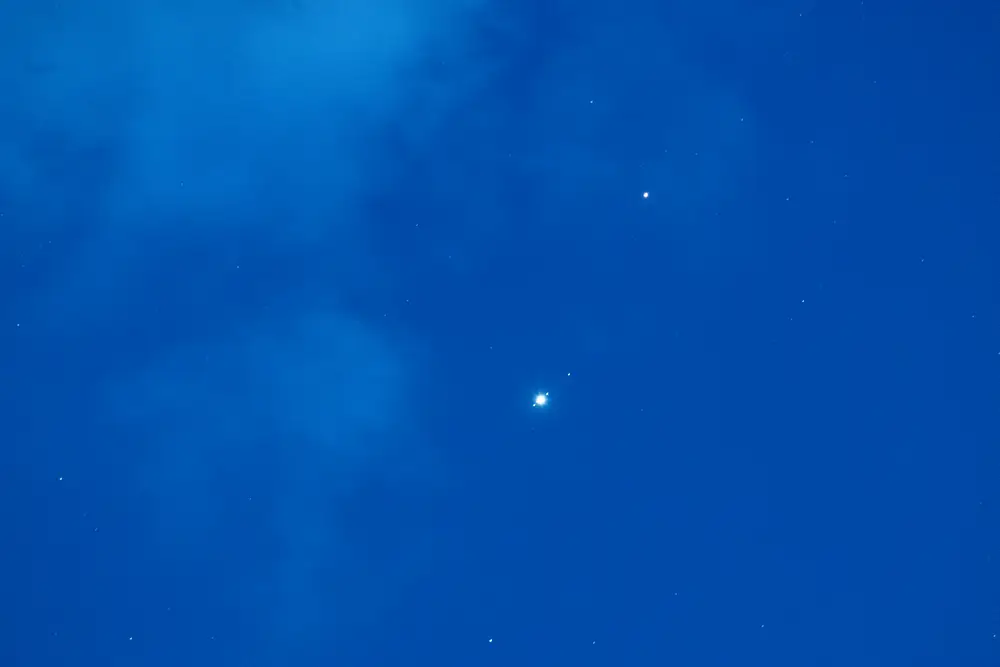
Planets Mars and Jupiter in conjunction in the sky.
The planets are lining up, forming a rare and special parade across the night sky at the end of February.
Five planets — Venus, Saturn, Jupiter, Mars, and Mercury — are bright enough to see with the naked eye. Uranus and Neptune are visible with a telescope.
They’ll be “strewn across” the sky and look like extra bright stars, the astrophotographer Dan Bartlett told B-17.
There are only a few days left to see every planet in our solar system, though. Saturn and Neptune are descending into the glare of the setting sun, making them difficult to see, even as Mercury is rising past them into view.
Here’s what you need to know to spot each planet this week.
What is the planetary alignment?
Though they appear in an arc across the sky, the planets aren’t actually arranged in a straight line in space.
In fact, according to the stargazing website EarthSky, a perfect straight-line alignment of all the planets will probably never happen.
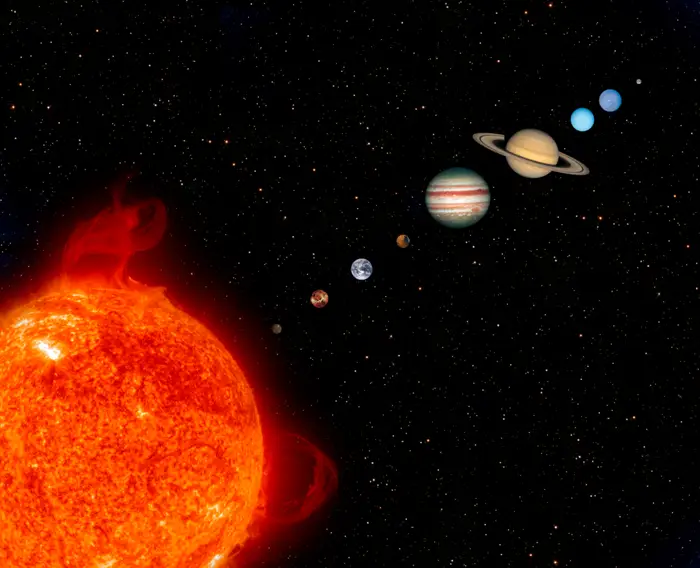
The planets may never line up like this.
Rather, since the planets all orbit along or near the plane of our solar system, called the ecliptic, they appear in a line across the sky. It’s the same reason the sun always follows the same path across the sky. That’s nothing special.
However, it’s uncommon for so many planets to be on the same side of the sun, visible in the night sky, at once.
Where and when to see the planet parade
Since all the planets will be following the same general path across the sky, they’re easier to spot than a random comet or supernova. You can see them all just after sunset.
Find a safe and comfortable spot with a clear, wide view of the sky, far from city lights. The top of a hill might be a good option. If you have binoculars or a telescope, bring them with you. You’ll catch a lot more detail that way.
Even from the city with a pair of binoculars, Jupiter is “fantastic,” Bartlett said, adding that you can often see its four biggest moons appearing as “little stars around it.”
How to find the planets after sunset
Start by looking to the west. Venus is the brightest “star” in the sky, with Mercury and Saturn clustered below it, just above the setting sun. Look up and to the south to find Jupiter high overhead.
Draw a line between Venus and Jupiter, then follow that line upwards and you’ll see Mars glowing red to the east.
For guidance to spot each planet, consult an app like SkySafari ($4.99 in the Apple App Store) or Stellarium (free).
Bartlett recommends finding out when the International Space Station will pass overhead at your location. If it coincides with planet-viewing hours, you can go at that time and grab a view of the planets while you’re out. The ISS is “as bright as Venus, sometimes many times brighter,” he said.
Check spotthestation.nasa.gov to find sighting opportunities near you.
A telescope will show much more
With a telescope and some practice, you can spot two more planets: Neptune glowing blue just above Mercury and Saturn, then Uranus on the path between Venus and Jupiter.
A telescope also reveals more detail on the other planets. Bartlett said he can often see canals on Mars, clouds circling Jupiter, and the faint sheen of Saturn’s rings.
Mercury’s appearance
Mercury can be tough to spot because it’s closest to the sun. For now, it’s tantalizingly close to sunset, hovering at the horizon.
On Friday, though, it will start to peek above the horizon just after sunset, then rise to meet Venus in early March.
By then, Saturn will have sunk out of view into the sunset, with Neptune following a few days later.
Even so, if you’re out after sunset in the next couple weeks, take a moment to look up. A few naked-eye planets should be clear to anybody — even in the city if you have binoculars. “You’ll see these bright stars, and most of them are planets,” Bartlett said.
This story has been updated. It was originally published on January 24, 2025.


